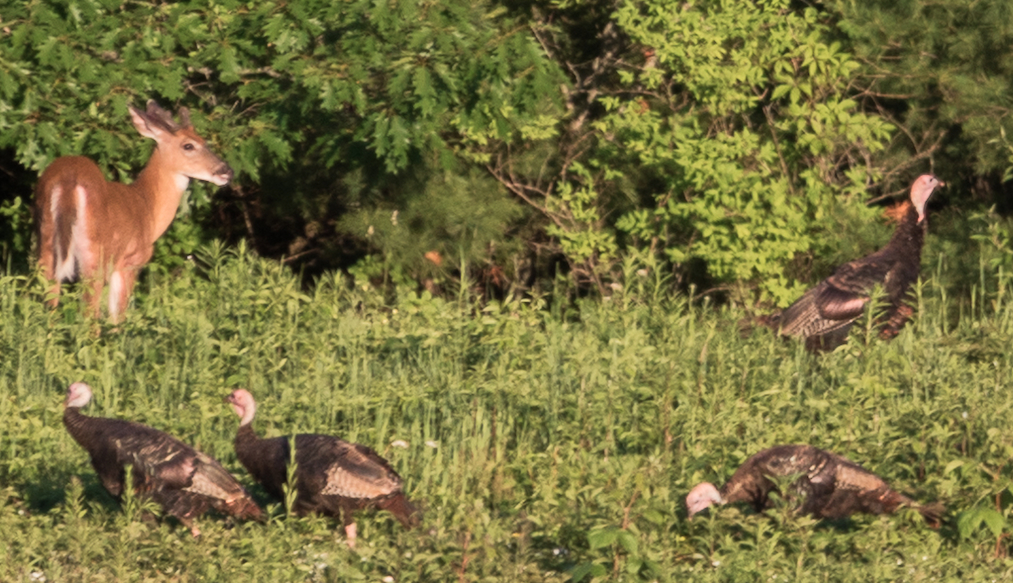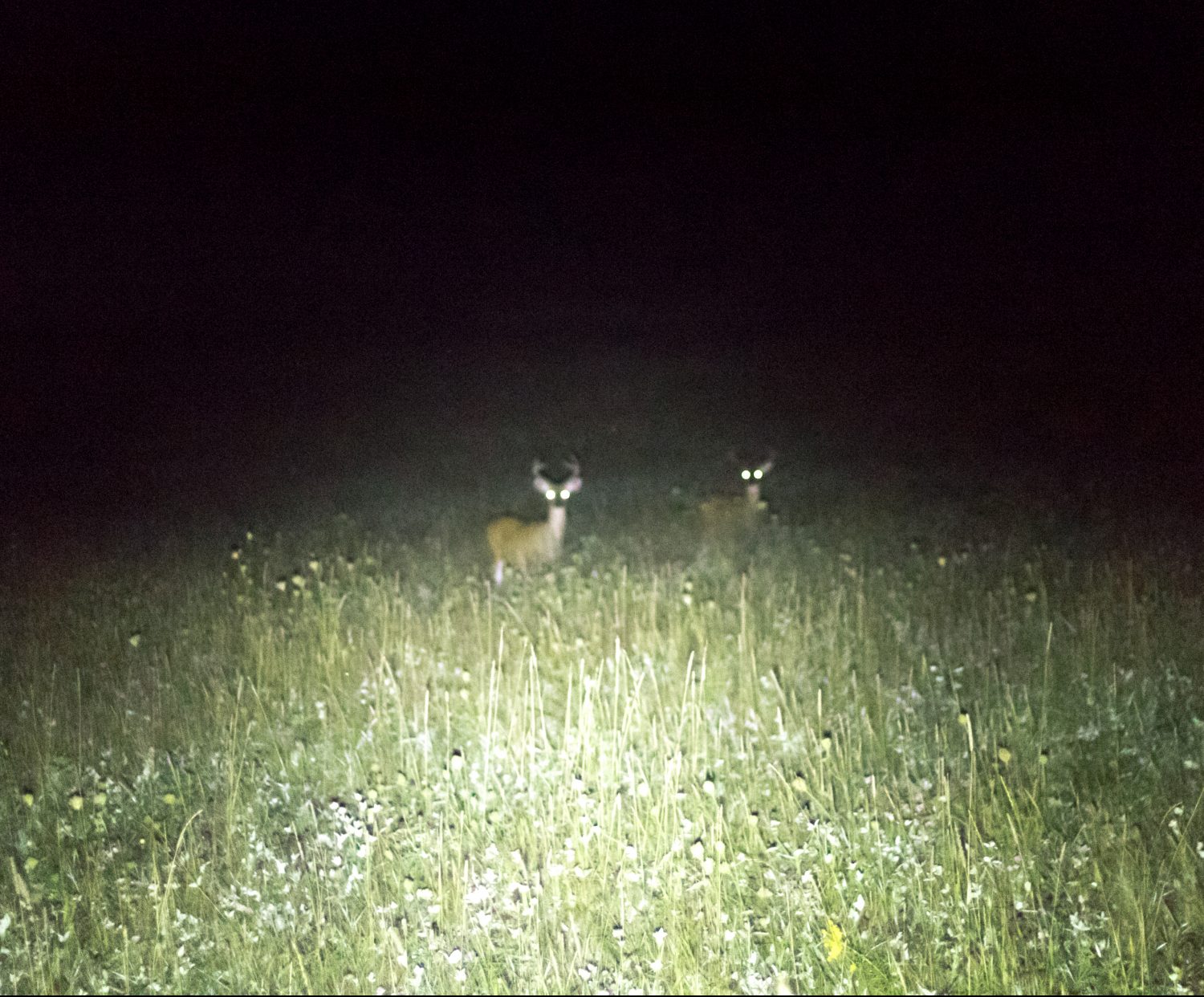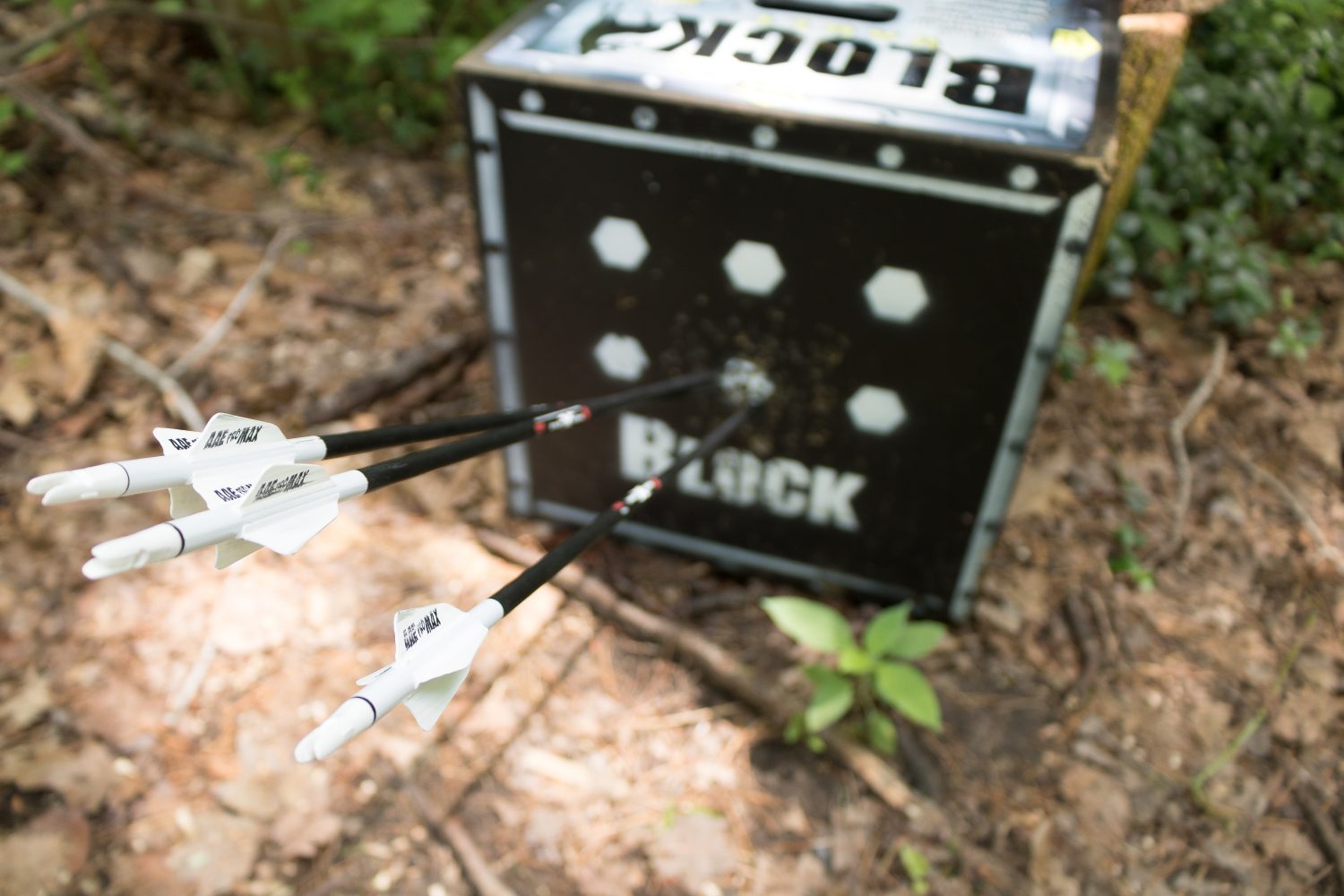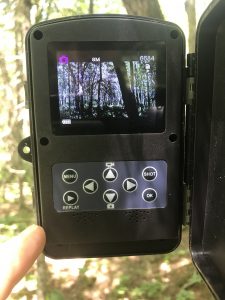Last Updated on May 30, 2024 by Jason Tome
In this post, I explain how to scout deer in July. Hunting preparations in July can mean the difference between success and failure this fall. It’s important to understand whitetail movement throughout the year to be ahead of the game.
Whitetails transition between summer and fall habitat. Knowing how to scout in July with the fall transition in mind makes all the difference.
Table of Contents
How To Scout Bucks In July
Trail Cameras
At this time of year, you can finally start to identify individual bucks, so I put my trail cameras out in July at the latest. I have a dozen or so trail cameras and add to my collection every year. These trail cameras will be placed both in newly scouted areas and in previously determined hotspots from years past.
Often, I start putting trail cameras out at the beginning of June. Trail cameras are one of the best ways to scout during July. This gives me adequate time to get all of my trail cameras out by the 4th of July.
The cameras that are set out before July are only to identify any camera malfunctions that may be occurring. In my experience, this has worked very well for me. Trail cameras that have been out for about a month will be checked around the 4th of July.
This will ensure cameras are running properly and that there are no obstructions for the rest of the all-important month of July when real data collection begins.
I have also been experimenting with checking trail cameras less and less because I do feel like it can have very negative consequences. Often I will leave regular trail cameras out for the entire season. Or even better, I’ve also started using cell cameras to keep my disturbance virtually non-existent.
The downsides are that most cell cameras don’t have a big enough battery to last from June through December and they cost money every month. I place cell cameras in September so they will last through the hunting season. This isn’t ideal since it’s so close to the hunting season but I try to pick my days to set them when the weather is dry and windy or rainy.
Newly Scouted Areas
In newly scouted areas where I have no previous data, my main goal is to determine the caliber of buck/bucks that made the previous year’s sign. If I start getting pictures of a target buck I will leave the camera in this location, checking the camera at most once a month. I will then start to put the pieces together to determine where I think this target buck is spending most of his time. Then I will pick the tree I will hunt out of.
Previously Scouted Areas
In areas I’ve historically seen, or captured big bucks on trail camera I will attempt to re-capture them to see if they made it through the season and are using the same core area as the previous year. If they are still using the same core area this will likely be a good place to hunt in the fall. Additionally, I will be able to see if new bucks have moved into the area.
High-Quality Bedding Areas
It is important to note that the cameras I am placing are almost always near high-quality bedding areas. High-quality bedding areas often hold particular bucks in their core area until the rut. Pictures of these bucks in July means they will likely still be in the area come October.
Big bucks not near high-quality bedding areas are less likely to stay once the hunting season begins. A previous post How To Place Trail Cameras For Mature Bucks goes into more detail on high-quality bedding areas and will help you succeed in trail camera placement.
The movement will likely change as hunting season approaches. Pictures in July will often reveal many daylight pictures of bucks when compared to the hunting season. Daylight pictures are never a bad thing, but I am not so much interested in the time of day bucks are showing up on camera. Instead, I am looking for the frequency. This tells me how close I am to a buck’s core bedding area.
Boots On The Ground Scouting
Although scouting in July is getting late in the game and you risk the potential of permanently bumping deer out of an area, I still think boots-on-the-ground scouting in July is worth it.
That said, it is harder because the buck sign from last year is harder to see, so you have to pay closer attention. You can still find excellent spots in July. Additionally, in some areas, bucks haven’t moved from their summer areas to their fall areas so you’re not disturbing much in that instance.
I focus my efforts on finding big buck rut sign in the shape of big rubs and scrapes and their proximity to a high-quality bedding area. I usually refrain from going into bedding areas to keep stress levels at a minimum in July. Once I find the sign I’m looking for I will hang a trail camera.
I may or may not hunt that spot in the upcoming hunting season. My trail camera will tell me if it will be worthwhile the following year. If the property has excellent deer sign and I want to prepare a tree, I do it that day. Accomplishing everything in one day eliminates repeated invasions which keep stress levels to a minimum.
Scout For Bucks In July By Glassing Fields
Bucks are taking in as much nutrients as possible to put on weight and antler growth in July. Glassing fields during this time has proven to be a pretty successful tactic for me in recent years and is one of the best ways to scout deer in July.
Bucks are much more relaxed from the lack of hunting pressure and the increase of cover from summer foliage. I try to capitalize on bucks having their guard down. On roads that don’t get a lot of traffic dawn and dusk seem to be the most successful times for glassing. I like this scouting tactic because it requires little effort and can produce a big reward.

Scout For Bucks By Shining Fields
I prefer shining fields at night over glassing fields at dawn and dusk. Both can work well but in my experience, the biggest bucks seem to like having the cover of darkness. Mature bucks know from experience that when they show themselves during daylight people/hunters driving by stop to check them out.
Being the weary creatures they are, mature bucks will only tolerate so much of that stress. I have found bigger bucks learn to avoid that stress completely, opting to only enter fields in the dark. I have had a lot better luck seeing big bucks at night than daylight or dusk. Sometimes they are not far from the road and when I pick my flashlight up I am surprised how close I can find myself to a big buck.

You’ve Located A Big Buck In July, Now What?
When I see a big buck in a field whether glassing or shining I will mark the location in my phone on a GPS App. When I get home I will analyze the surrounding landscape and see if I can identify any key features that may point me in his direction. To learn how I do this check out: 15 Best Tips For Scouting Deer Using Google Earth.
To keep stress levels at a minimum I will do a quick but precise scouting mission to see if I can figure out where bucks in the area are spending most of their time. For example, if I see a lot of old rubs and scrapes from year’s prior I will find a tree to hunt out of for the hunting seasons and place a trail camera. Depending on how close to the season it is, I will wait a month at least before returning to check the camera.
July Is For Practice & Preparation
Routine
When I was younger I only gave myself a week or two to prepare for the upcoming season. Being out of practice going into the hunting season cost me a few deer. When I got tired of failing I adopted a routine that works for me. My routine leaves me feeling confident with my equipment for the hunting season and confidence is key.
I start my routine once there is enough daylight after I get home from work to shoot my bow outside, which is usually after daylight savings time around the first week of March.
My routine consists of shooting at least a dozen arrows or so every day after work to keep my focus and strength up for the hunting season. Most times I end up shooting more.
Gear Preparations In July
This is the time of year to start thinking about gear. When I think back at the previous hunting season I ask myself; what worked? What didn’t work? Do you wish you had anything? What broke and needs fixing?…etc.
Asking these kinds of questions and making the improvements sooner rather than later allows me to make the upcoming season less stressful. For me personally, when things don’t go as planned I tend to get stressed out (like metal clanking metal together when climbing up a tree in a bedding area). I like to enjoy myself on the stand, after all, it is supposed to be fun! Making sure I have the right equipment and gear adjustments completed early has helped me to create a less stressful and seamless hunting experience.
Conclusion
You can still do a lot of scouting in July to put the odds in your favor for the hunting season in the fall. Boots on the ground scouting is a great options, but does have some cons being so close to the hunting season. My preference is to let my trail cameras, binoculars, and flashlights do the heavy lifting where possible.
While these are doing the heavy lifting I focus my efforts on getting in shape and preparing for the upcoming hunting season. I hope this post has helped you be more effective in scouting deer in July.
Many of the concepts for scouting deer in July apply to the other summer months as well. Check out the next post in this series: How to Scout Deer in August.

